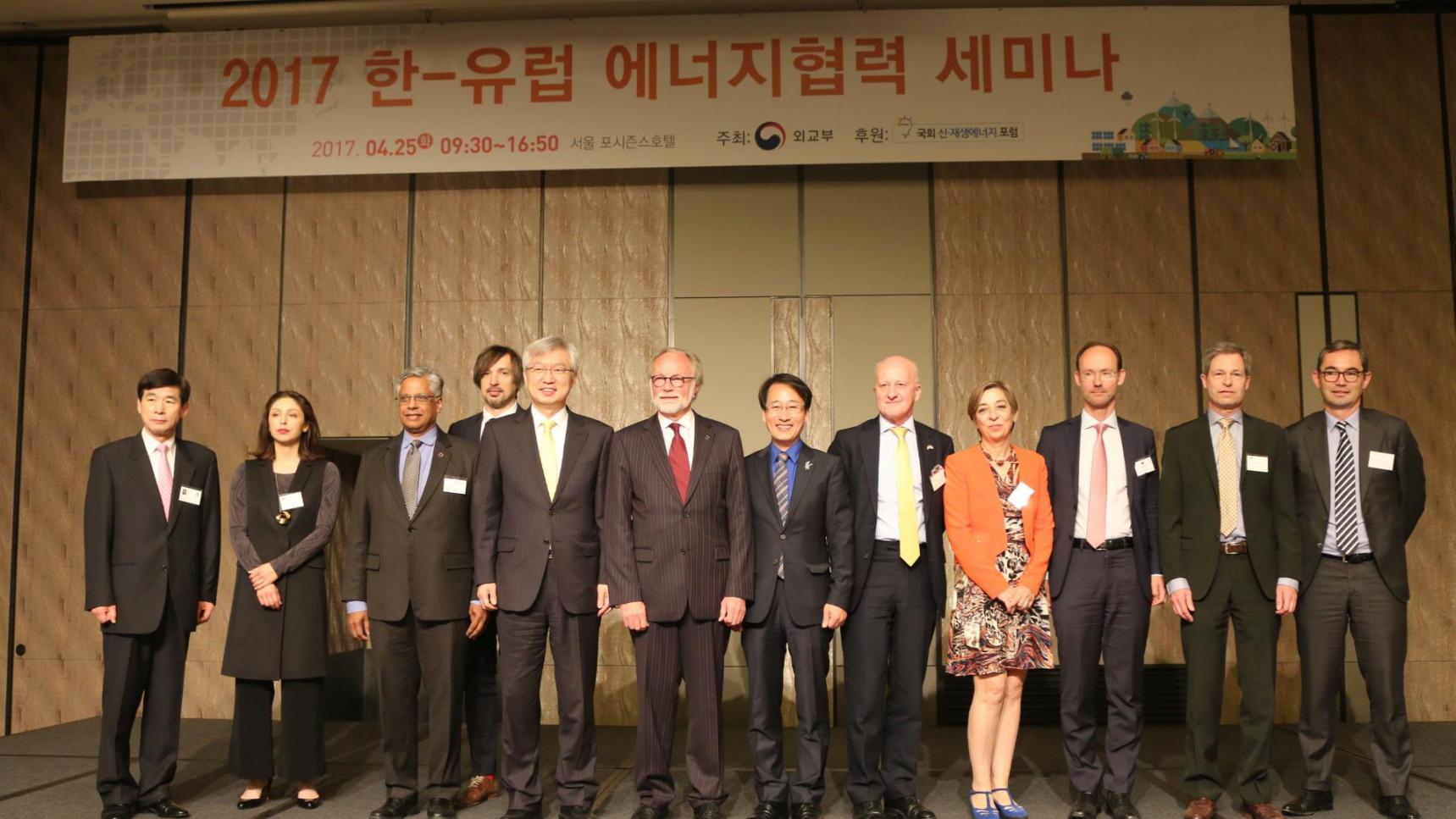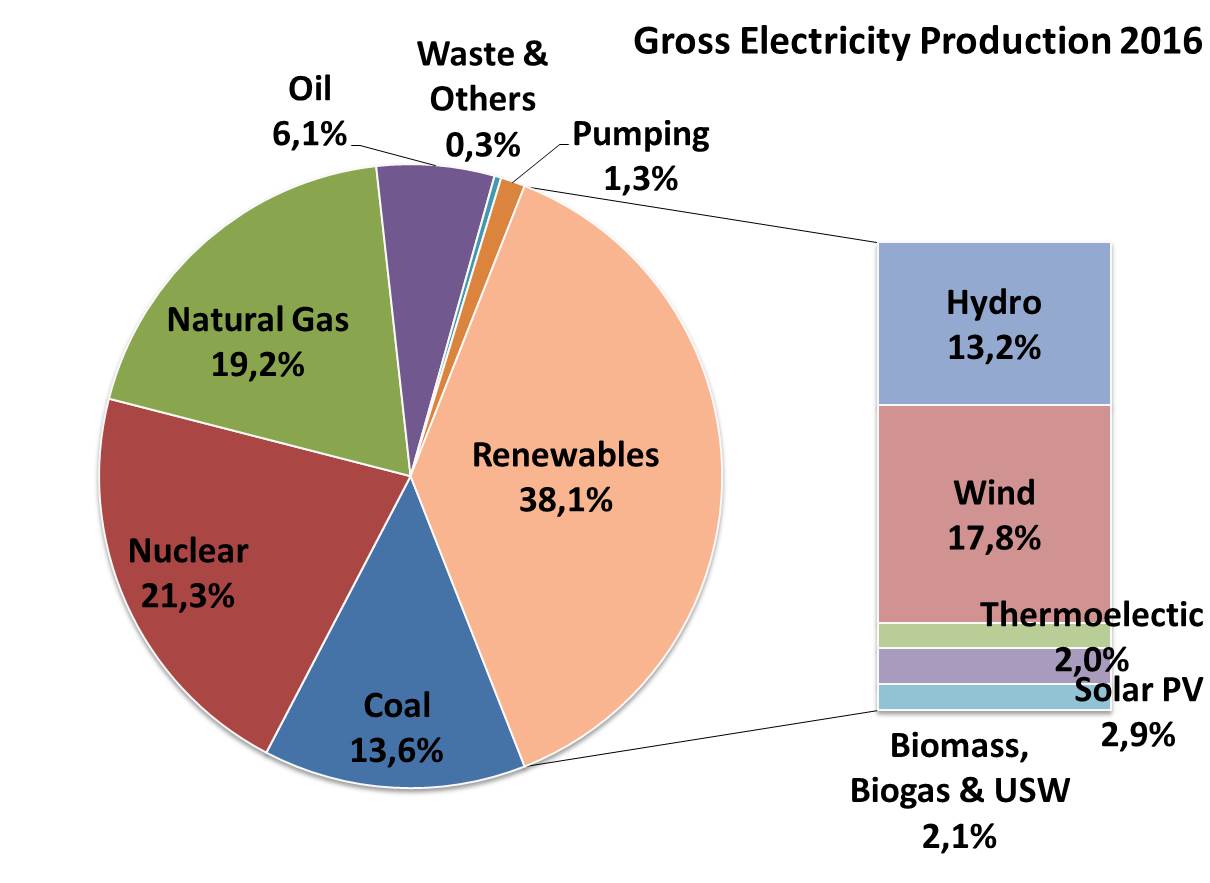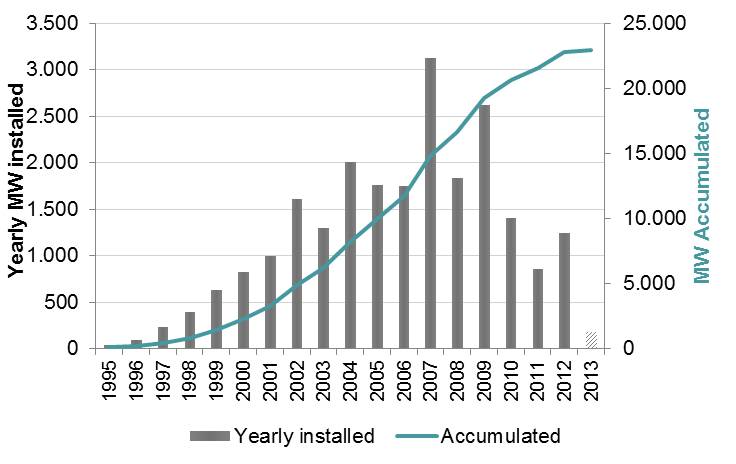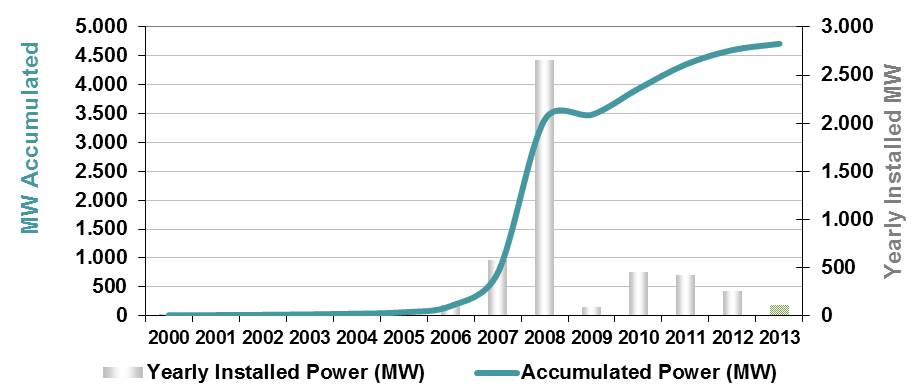
Marisa Olano, International Manager-Institute for Diversification and Saving of Energy (IDAE) Spanish Ministry of Energy, Tourism and Digital Agenda. April 2017
The Institute for the Diversification and Saving of Energy (IDAE) is a public business entity reporting to the Spanish Ministry of Energy, Tourism and Digital Agenda (MINETAD) through the State Secretariat for Energy. From its very beginning, its main strategic objectives were increasing energy efficiency and saving in every energy consumption sector and fostering a gradual penetration of renewable energies. From the outset of renewable energy planning in Spain, in the year 1986, IDAE has provided technical and energy policy planning assistance to the Spanish Central Government, where the first renewable energy plans where devised and drawn up. From then on, the successive renewable energy plans up to the present day have been designed and prepared exclusively by IDAE. One of the mainstays of the renewable energy plans (REP) 2011-2020 and the national renewable energy action plan (RENAP) 2011-2020 (according to Directive 2009/28/EC), has been identifying barriers, with regards electrical infrastructures, to reaching the high level of renewable electricity penetration contemplated in these two plans, and finding the necessary grid design and management upgrade measures to overcome these barriers.
2020 renewable energy targets: The European Union's Renewable energy directive sets a binding target of 20% final energy consumption from renewable sources by 2020. To achieve this, EU countries have committed to reaching their own national renewables targets ranging from 10% in Malta to 49% in Sweden. For Spain the objective is also 20% as the EU global target. They are also each required to have at least 10% of their transport fuels come from renewable sources by 2020. All EU countries have adopted RENAPs showing what actions they intend to take to meet their renewables targets.
EU is on track to meet its target of 20% renewable energy by 2020: this is one of the key messages in the European Commission's second State of the Energy Union report, which was released on 1 February this year. However, EU countries will need to maintain their efforts to reach their national renewable energy targets. Increased use of renewable energy is integral to the EU's Energy Union strategy, and brings benefits for the environment, consumers, Europe's energy security and the European economy as a whole. In 2015, 25 of the 28 EU countries exceeded their national indicative trajectories: some have even surpassed their targets for 2020 already. Renewables will continue to play a key role in helping the EU meet its energy needs beyond 2020.
The EU 2030 Framework for Climate and Energy also sets a further binding target that at least 27% of the energy used in the EU by 2030 should be renewable. The 'Clean Energy for All Europeans' package published by the Commission on 30 November 2016 includes a proposal for a recast Renewable Energy Directive that will provide the right framework for EU countries to meet this goal collectively and in a cost-effective way.
Increasing renewable use will therefore help the EU meet the commitment it made at the 2016 Climate Change Conference in Paris to contribute to limiting the global rise in temperature to only 1.5°. Renewables also play a major role in making the EU a global leader in innovation: EU countries hold 30% of patents in renewables globally.
In addition, the EU's efforts in promoting the use of renewables have resulted in lowered costs. A number of renewable technologies have now become cost-competitive, and can in some cases be even cheaper than fossil fuels. The renewable energy sector plays a key role in the EU economy, with a turnover of around €144bn in 2014 and more than one million people employed.
Commissioner Arias Cañete said: The clean energy transition is now an irreversible process at global level.
In Spain, a country with no hydrocarbon deposits, the contribution from renewable energies to the electric generation mix has already reached close on 40%.

Fig 1: Gross Electricity Production 2016 (RE : 38,5% in 2016).
Spain is also on track to meet its target of 20% renewable energy by 2020:

Fig 2 Total Final Energy: 85.874 k toe (+1,5 %); RE Contribution: 15,9%
In recent years, a policy has been put in place that fosters renewable and clean energies. As a result, Spanish companies hold leading positions on the world rankings for the various energy types. Spain is a world leader in all fields of Renewable Energies, boasting an industrial fabric that includes companies of high international standing. Their operations all over the world and enormous R&D+i efforts have given them a competitive edge over the global competition. Here are some figures that confirm these statements:
Spain is the second-placed country in Europe in terms of wind power generation and the fourth worldwide in terms of installed power: 23.047 MW at the end of 2016.
Installed wind capacity in Spain

IDAE (The Institute for the Diversification and Saving of Energy) has been a key player in the deployment of RES & energy efficiency in Spain. The investments activity is one of the IDAE'S strategic action lines. The aim is to promote projects which have a clear technological innovation component and have potential for replication. The financial scheme depends on each specific case, the sector concerned, the technology involved and the turnover.
The leading companies in the thermoelectricity sector are also Spanish.
It has the largest installed capacity of solar thermal electricity in the world (2,250 MW at December 2014), with commercially operating power plants in the four available technologies: tower, enclosed-parabolic trough, Fresnel and dishes. 73% of the projects undertaken worldwide are carried out by Spanish companies.
Spain has the second-highest number of renewable energy patents per inhabitant in the world (behind Germany and ahead of the USA), fifth in absolute terms and seventh in terms of investment (Unión Española Fotovoltaica Report).
The world leader in renewable energy production is Spanish and it is also one of the five largest electricity companies in the world.
It is the fifth-placed country in Europe in terms of installed solar photovoltaic power (4,675MW in 2016) and eighth-placed worldwide.
PV installed capacity

Control Centre of Renewable Energies, CECRE, is the leading renewable energy control center in the world, securing integration of high shares of renewables in the electricity grid and markets: Integration of intermittent renewable electricity has many challenges and, in the case of Spain, has also been conditioned by the scarce of interconnection capacity of the Iberian Peninsula with France. This has prevented the Spanish system from taking advantage of cross-border exchanges, thus increasing the importance of the coordination, aggregation and control of the overall electricity production which is fed into the grid. In response to these challenges, the Spanish Transmission System Operator (REE) established in 2006 the Control Center of Special Regime (CECRE), whose objective is to monitor and control RES production. CECRE is the first national control center in the world dedicated to monitor and control RES, and has been a key factor to maximize RES integration whilst assuring the overall security of the electrical system.
Support schemes for renewables
Public interventions such as support schemes remain necessary to make certain renewable energy technologies competitive. To avoid distorting energy prices and the market however, these schemes should be time-limited and carefully designed. In Spain, due to the PV capacity installed in 2008 that implied a big budget for the feed in tariff premiums and the excessive capacity in crisis times that was too high for the demand, the government choose to reform the support schemes an approved in January 2012 a Royal Decree-Law 1/2012 of 27 January leading to the suspension of the advance allocation of remuneration procedures and the elimination of economic incentives for new power generation facilities based on cogeneration, renewable energy sources and waste, which eliminated incentives for the construction of special regimen facilities in order to avoid adding new costs to the electricity system. (the electricity system debt has a cumulated deficit between 2000 and 2013 is 23.070 million Euro in 2016, 7,9 % less than the previous year according to CNMC.)
Since 2016 a new system of tendering was put in place for new RE capacity. In 2016 the Total capacity tendered was 500 MW offered a 100% discount, so they said they can do the wind farm at cero investment cost and they don’t need remuneration. In Auction 2017 by the moment the Capacity of 3000 MW will be granted by competitive tendering for different RE technologies.
El Hierro island, 100% Renewable Energy: In Spain, the island of El Hierro is a global benchmark for energy self-sufficiency and sustainability: a wind-hydro system that covers nearly all of the island’s power demand with renewable energy and the storage of the excess of wind energy and converting it into water’s potential energy for use when the wind resource is insufficient to meet demand. Multiple benefits: energy-related benefits, environmental, economic, social and pole of attraction. More info: http://www.goronadelviento.es/
And to end with and as a conclusion, Spain is a country that has bet and bets decidedly for the development of renewable energies because of their social, environmental benefits and for their lower energy dependence. The socio-economic benefits revolve around the creation of employment and business opportunities, both inside and outside our country, where Spanish companies and technologies occupy a leading position.
IDAE International Activity Being part of the State Secretariat for Energy, IDAE has a strong focus on international energy activities based on two of its strategic objectives: to promote the presence of Spanish companies in the international markets and to act as the Institutional Representative of the Spanish Government in European Programmes and Forums as well as within international networks.
Fora where IDAE is involved as national representative are the International Energy Agency (IEA), IRENA the International Renewable Energy Agency, the Alliance for Rural Electrification (ARE), the Global Bioenergy Partnership (GBEP) and the Renewable Energy Policy Network for the 21st Century (REN21), among others.
IDAE’s priority collaboration regions are Latin America and the Mediterranean. Regarding Asia, IDAE maintains an important collaboration with several countries, including Korea. Different activities are being carried out within the framework of the Memorandum of Understanding (MoU) that Spanish Government have signed with theKorea Energy Management Corporation (KEMCO) ( New and renewable energies center) in September 2009. 1st and 2nd of December 2011, was organized in Pamplona, Spain, the first “KOREA – SPAIN RENEWABLE ENERGIES COOPERATION FORUM” The second workshop was held in october 2012. Since them some delegations visited IDAE and Spain (the last one in November 2016 by Korea Energy Agency (KEA) new president). We are very pleased to share the Spanish experience in RE with the Korean authorities and companies as in the organized by the Ministry of Foreign Affairs: the 2017 Korea-Europe Energy Cooperation Seminar at Four Seasons Hotel in Seoul on April 25 under the sponsorship of the National Assembly New and Renewable Energy Research Forum.


